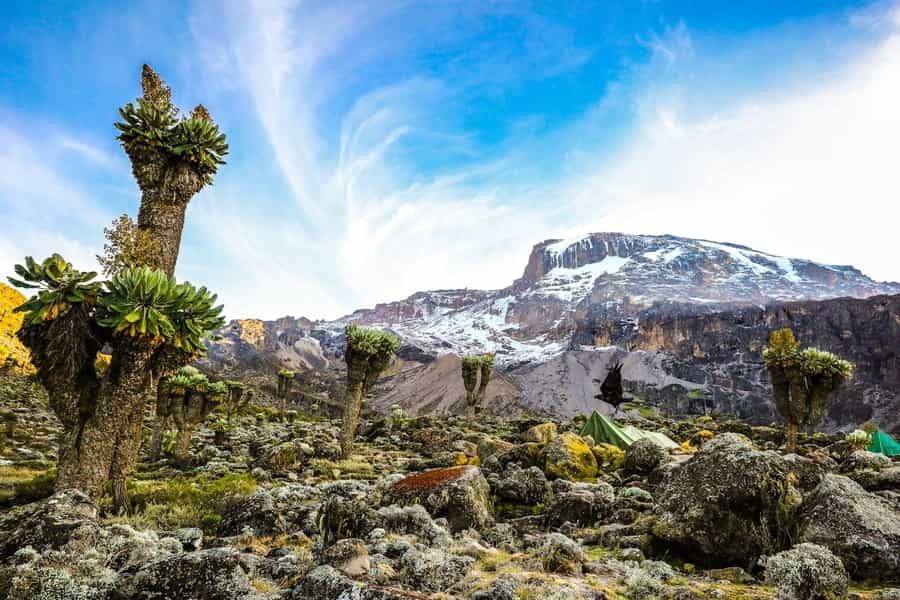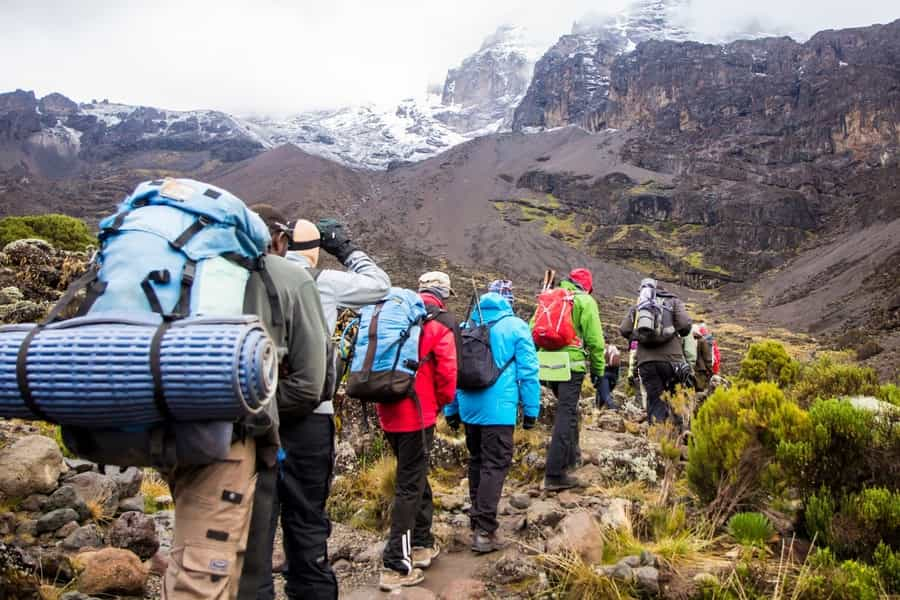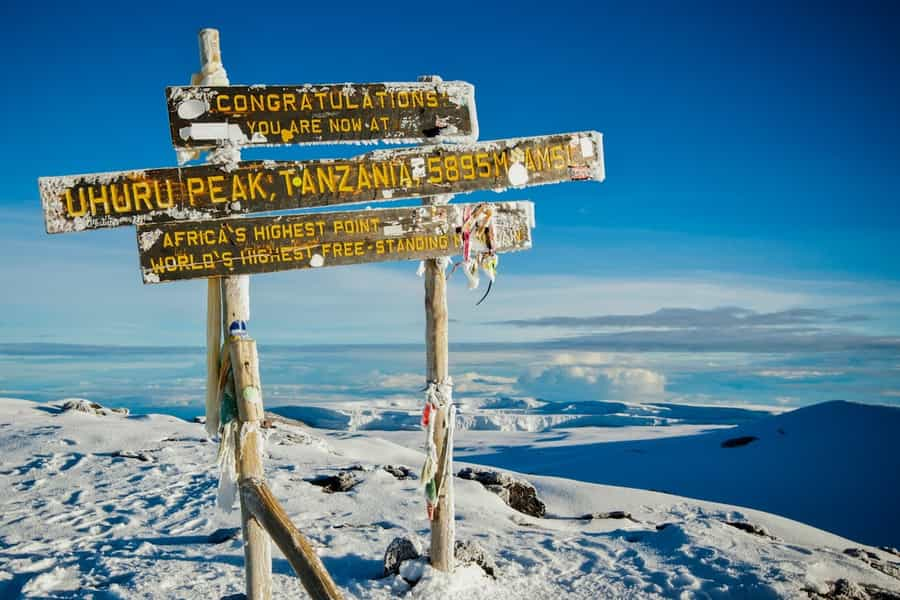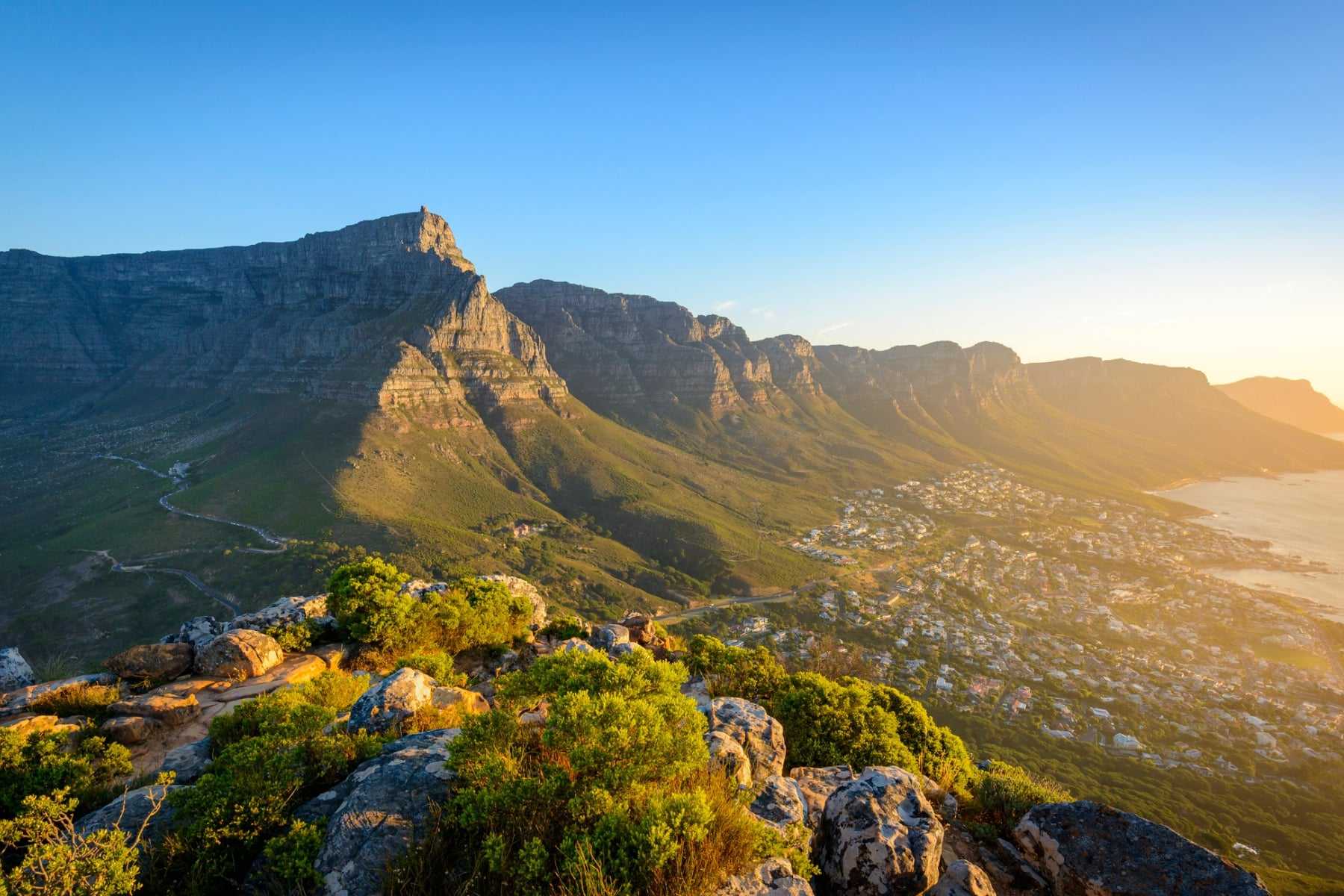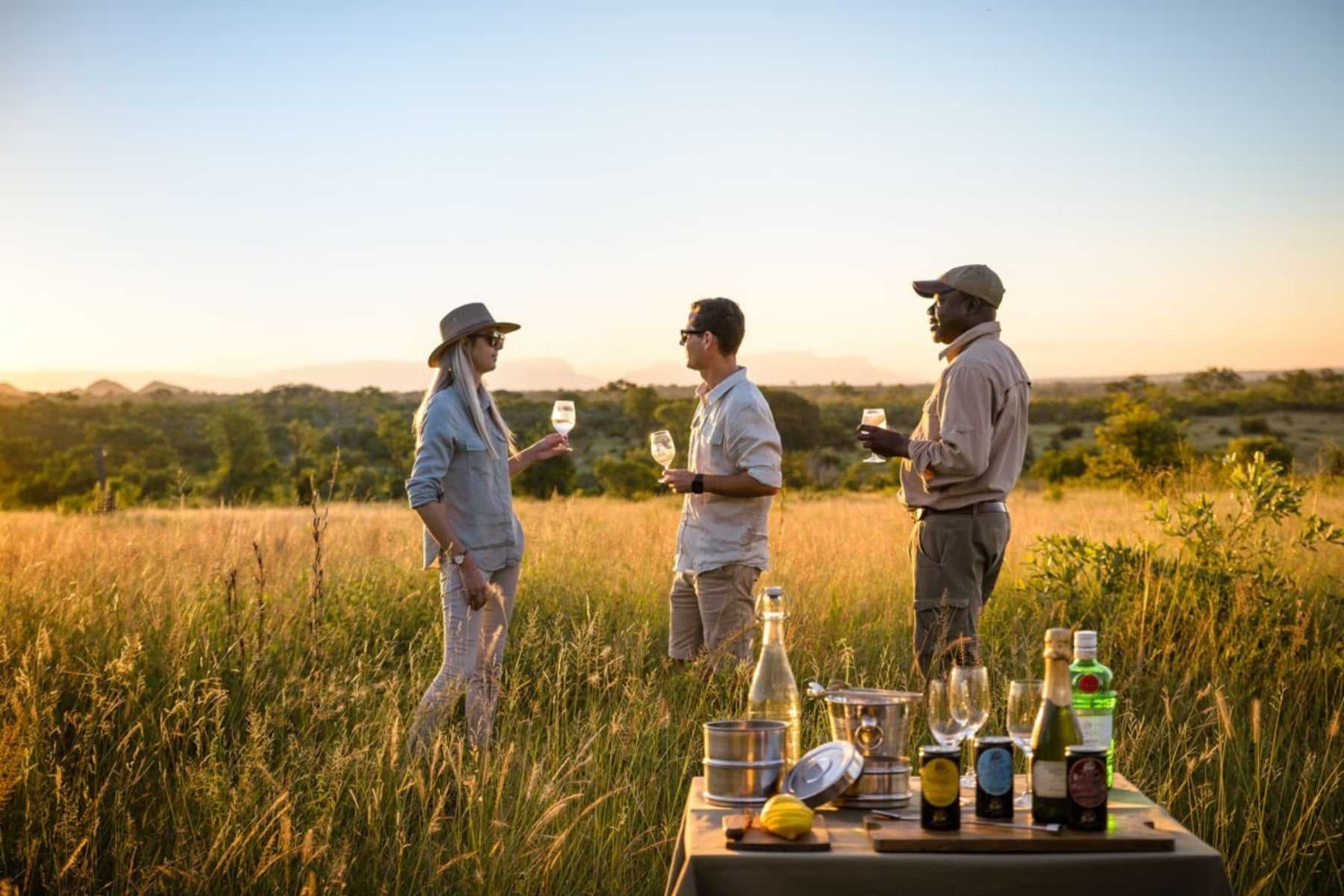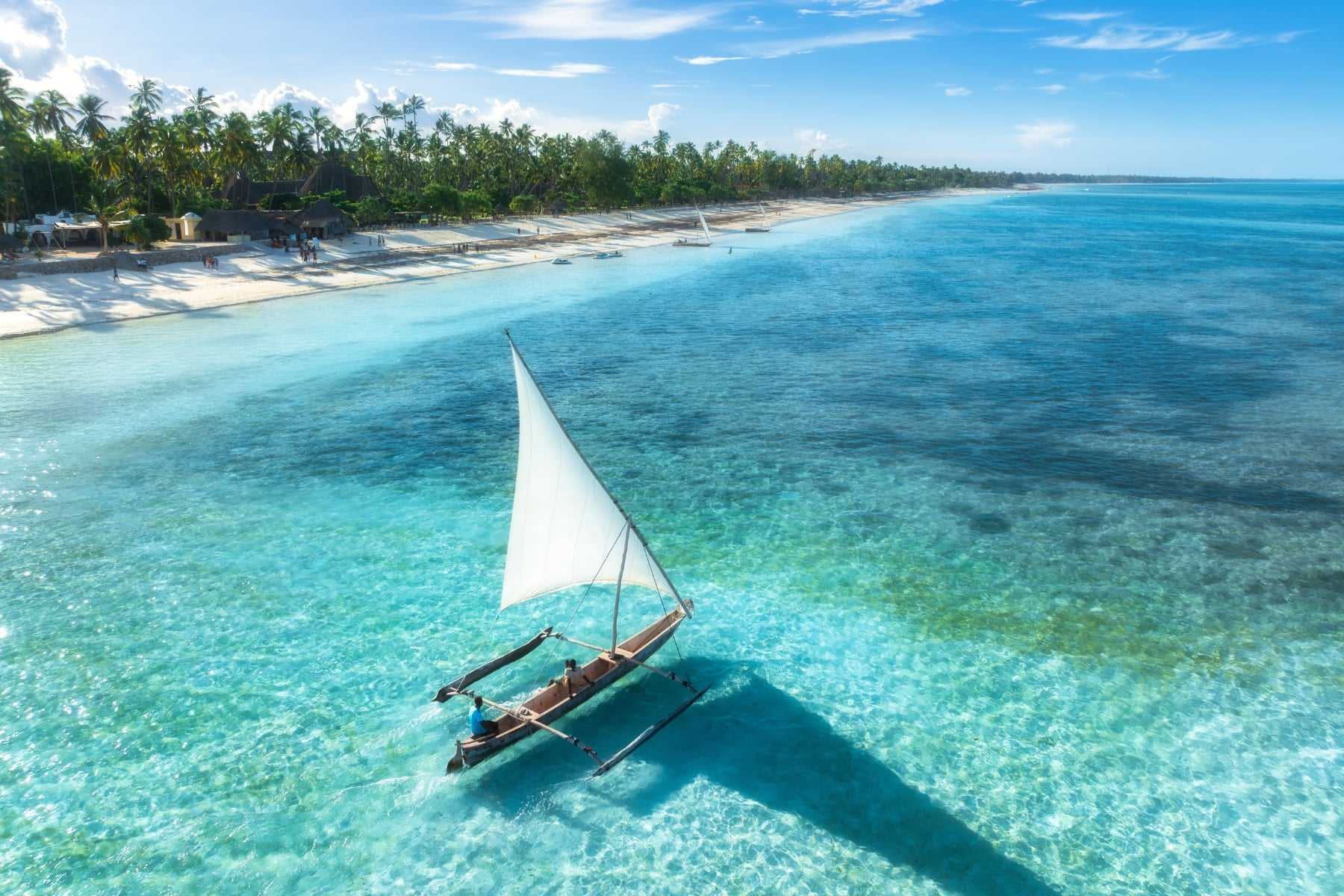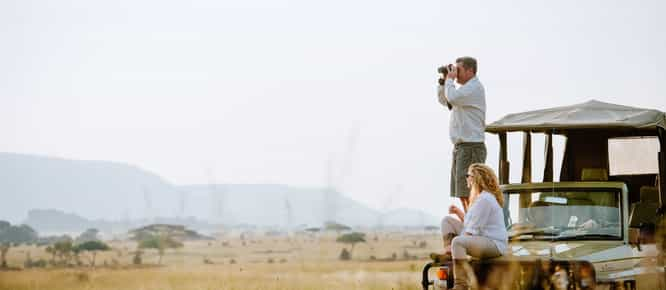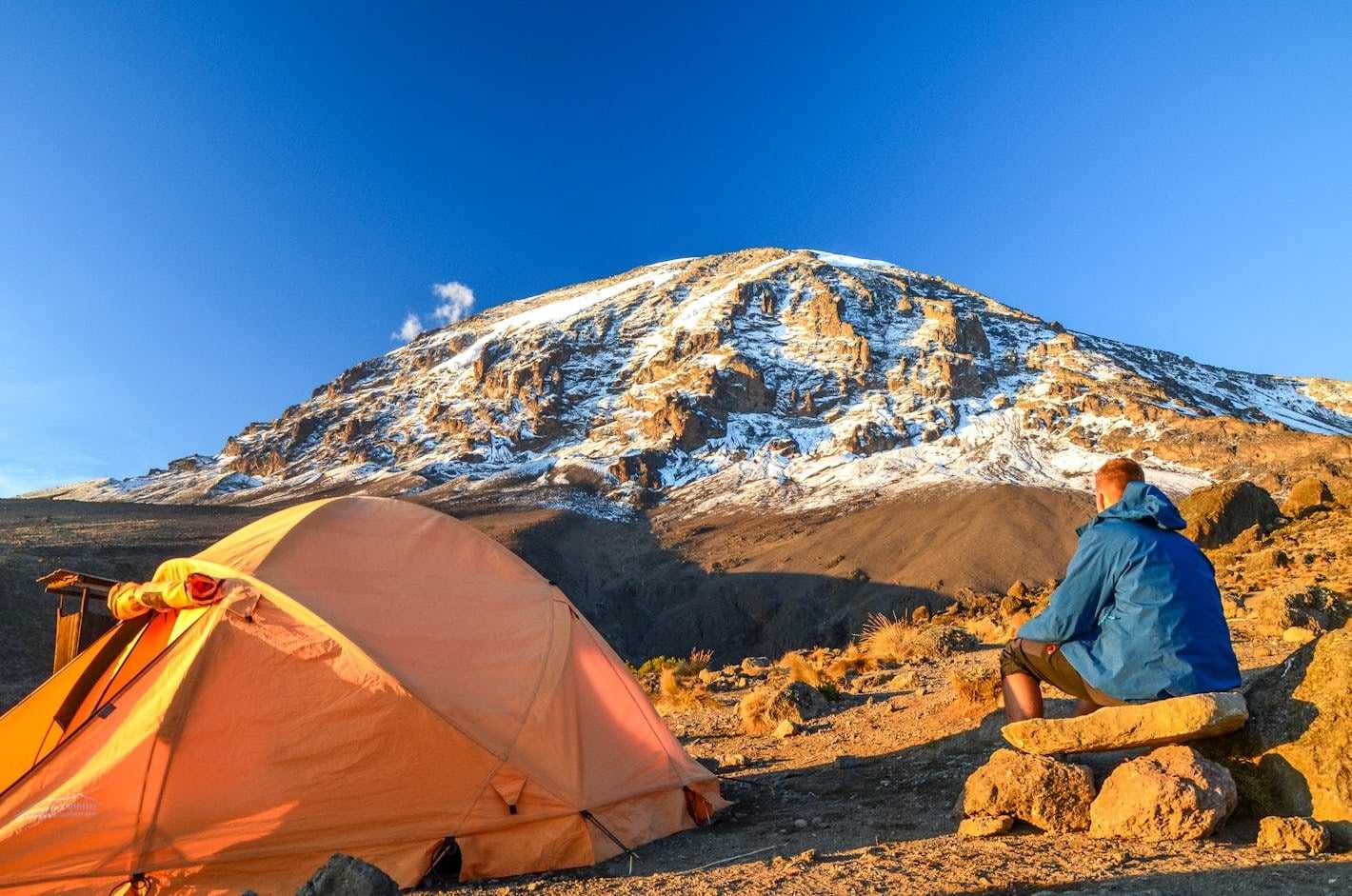
Are you ready to climb Mount Kilimanjaro?
Standing at a proud 5,895 metres (19,341 feet) above sea level, Mount Kilimanjaro is the African jewel in the Seven Summits crown, and an icon of the continent. In fact, it’s not only the highest mountain in Africa, but the tallest free-standing mountain in the world. Interestingly, it’s officially classified as a volcano and although the highest point is referred to as Uhuru Peak, it’s actually not a peak but the highest point of the crater rim of Kibo, the largest of the volcanic cones.
The first official recorded summit of Mount Kilimanjaro was on the 6th October 1889 by Hans Meyer and his guide, Yohani Lauwo. The first woman to summit was Sheila MacDonald in 1927 (who, rumour has it, enjoyed a glass of champagne at the top!) and since then, climbing Mount Kilimanjaro has become a popular and life-changing experience for many thousands of climbers. It also doesn’t require any technical climbing skills or specialised equipment, making it one of the most sought-after climbs in the world.
If you’re reading this article, you might be thinking about climbing Mount Kilimanjaro yourself. For those who haven’t done it before, organising a trek can be a daunting process. Our beginner’s guide is designed to give you some insight into the history of Kilimanjaro and Tanzania, answer some commonly asked climbing questions, and provide a helping hand in planning your trek of a lifetime.
Climbing Mount Kilimanjaro: the basics
First up, let’s get to grips with Mount Kilimanjaro itself and a few facts and figures. After all, if you’re going to be attempting a climb, it pays to be prepared and have as much information as possible.
Where is Mount Kilimanjaro?
Mount Kilimanjaro is in the northeast of Tanzania, very close to the border with Kenya. On a clear day, the snow-capped peaks are visible from miles around, and the views are particularly special from Amboseli National Park in Kenya. The two closest towns are Arusha and Moshi, both in Tanzania.
How do I get there?
The closest international airport is Kilimanjaro (JRO), which accepts several international flights a day, mostly from Europe. You could also fly to either Dar es Salaam, Tanzania’s main international airport (DAR), or Nairobi International Airport (NBO) in Kenya, and make your way to the mountain from there, perhaps by flying to Arusha domestic airport and making the 90-minute drive to Mount Kilimanjaro.
If you’re flying in to Nairobi, Arusha, Kilimanjaro itself, or even to another destination in East Africa, you can often see the jagged, snow-laden crags of Mountain Kilimanjaro peeking through clouds from the window of the plane. A spectacular sight!
How long does it take to climb Mount Kilimanjaro?
It takes anywhere between five and nine days to summit Mount Kilimanjaro and descend to the finishing point. The time taken is dependent on the route you choose and of course, how much time you have available, but in general, the more days spent on Mount Kilimanjaro the more likely you are to succeed. You will often hear the porters say “pole pole” on your trek, which means “slowly slowly” in Swahili. This is excellent advice: the slower you are, the more acclimatised to the altitude you will become and the less likely you are to suffer from altitude sickness. Walk slower than you normally would – even on your training hikes – and take your time. It’s not a race after all!
Where do the climbs begin?
Most Mount Kilimanjaro climbs begin in Moshi or Arusha, two towns in northern Tanzania. Both have a range of accommodation options for the night before your climb, but Arusha is the larger of the two with arguably better facilities and more choice.
When is the best time to climb Mount Kilimanjaro?
The conditions on Mount Kilimanjaro can be quite variable throughout the year and are known to change dramatically, without much warning. Generally, the best time to embark on a climb is in one of the two dry seasons: either from July to October, or around December to mid-March. At this time of year, the skies are clear, there is good visibility, and temperatures are not as extreme – although it does get cold in July and August. At other times of year, rain, mud, ice and fog can detract from your overall climbing experience, but it is still possible to summit. We will always take advice from our operators on the ground on the weather conditions, and if you would like to know more in advance of your trip, please get in touch.
If you would like to know more about the best time to visit Tanzania generally, check out our blog article for some top tips.
What is the best route to take to the summit?
This is one of the most popular questions around climbing Mount Kilimanjaro and the one that is probably the hardest to answer. There are seven routes to the top of the mountain: Machame, Marangu, Lemosho (the three most common), Rongai, Shira, the Northern Circuit and Umbwe.
Each route has its own benefits and drawbacks. The Marangu route, for example, is one of the most popular as it takes a relatively short amount of time and is less steep in many areas – but this also means it is one of the busiest. Marangu is also a very popular route thanks to its hut accommodation (it’s the only route on which you won’t camp) and low cost (as you don’t need camping equipment), but this also makes it busier than the others. Lemosho is the one for you if you like getting off the beaten track, and it offers excellent wildlife spotting opportunities, whilst Rongai is equally as ‘remote’ but has a milder ascent.
When you start to plan your Mount Kilimanjaro climb and begin the process of choosing a route, we will help guide you and provide a more detailed summary of the pros and cons of each.
Mount Kilimanjaro training
Now you have the basics in place and probably have an idea of which route you would like to tackle and when you are going to go. But how should you approach your training to climb Mount Kilimanjaro? What is the right sort of training? And when should you start your training plan? Here’s what we recommend…
How long should I train for?
Most people will need around four to six months of training to climb Mount Kilimanjaro. This may sound like a long time but climbing the tallest mountain in Africa should not be under-estimated – and the more physically prepared you are, the higher your chances of success.
What sort of training should I do?
Mountain climbing requires sport-specific training. This means that in order to prepare adequately, you need to mimic the type of activity you will be doing. In this case, that is hiking so climbing hills and mountains in your local area, or even using gym apparatus, will be most beneficial. To prepare even further, try and replicate the conditions you will experience during the trek, for example, train in the shoes you want to wear and carry a weighted backpack, just like you would for the big event.
Cardiovascular exercise like running and jogging can be also useful, but only doing these in your routine won’t prepare your muscles enough for a strenuous six-day hike. It is recommended that you supplement cardio workouts with strength training, particularly for the lower body and core, gradually increasing the weight as you go.
It is worth noting that the route to Uhuru Peak is not a technical climb and no technical climbing knowledge or skills are required.
Mental training for Mount Kilimanjaro
Preparing your mind mentally can be just as effective as physical preparation when it comes to your Mount Kilimanjaro training. Climbing a mountain like this is a transformative experience and can change you in ways you least expect. It is advisable to go into your trek with an open mind, but also to consider your ‘why’. If you understand why you are going through such a challenging process and what your motivation is to reach the summit, it will be easier to push through the hard times and make your dreams a reality.
Remember that your Mount Kilimanjaro climb will be full of new experiences and situations. You will most likely be climbing with a group of people you have never met before and you may be unsure of what the actual terrain of the mountain looks like. Maybe you’re unfamiliar with the type of food that you will be eating, or what the sleeping arrangements are. Again, preparation is key and it is important to visualise as many potential situations as possible to prepare – and ease – your mind. If you are unsure about anything, please reach out to us for help; we are always more than happy to answer any and all questions!
Is there anything else I should consider in my Mount Kilimanjaro training?
Whilst both physical and mental training is of course essential in your preparations to climb Mount Kilimanjaro, we cannot emphasise the importance of having the right kit and climbing gear. You can expect extreme heat during the day and low to below freezing nighttime temperatures (and everything in between!). The weather can change dramatically and if you do not have the right kit, it doesn’t matter how much training you have undertaken.
As a starting point, you will need sturdy walking boots, plenty of thermal layers and a hat and gloves, a sleeping bag and pad, trekking poles, a large backpack and a smaller day pack. One of the best items we can recommend (aside from good walking boots) is a down jacket; they are lightweight, cosy, do not get weighed down with sweat, and are fundamental for any Mount Kilimanjaro climb. Sunglasses and sun cream are also essential, as is a head torch for when darkness falls.
If you would like a full packing list for Mount Kilimanjaro, please don’t hesitate to get in touch.
The benefits of climbing Mount Kilimanjaro
If you ask anyone who has climbed Mount Kilimanjaro what the benefits are, they will probably all have a different answer. People take on the challenge for a variety of reasons and at vastly different ages and stages of their lives and so of course, the benefits may differ. But for most, climbing Africa’s highest mountain is a life-changing experience to be remembered for the rest of their lives, and a real bucket-list tick.
For those at Timbuktu who have summited Mount Kilimanjaro, one of the standout benefits was the sense of achievement they felt when they reached the top. The climb itself is most certainly challenging and the process really shows just how powerful your mental and physical endurance can be, and how much you can push yourself when the going gets tough. The team also mentioned how much they felt they had grown personally during both their training and the trek itself. There are many fears to overcome, be it travelling solo, attempting a high-altitude climb, or simply the fear of the unknown and what might happen.
One of the greatest benefits of climbing Mount Kilimanjaro has to be the appreciation of nature at its most raw and powerful. The landscape of the mountain is incredibly unique and you’ll pass through a number of ecological zones as you climb, each more weird and wonderful than the one before. From dense rainforest to heath-filled moorlands and the almost otherworldly alpine and artic zones, the flora is staggering and for the most part, completely pristine and untouched. There is no electricity on the mountain nor any permanent structures, and those who litter face serious fines.
Most climbers leave Kilimanjaro with a renewed interest in the natural world and an intense need to start contributing to global efforts to protect and preserve our environment.
What can I do after climbing Mount Kilimanjaro?
Many people stay in Tanzania for a few days after their climb ends to experience the wonderful culture and landscapes of the country. A popular choice is to go on safari in one of the world-renowned national parks, like the Serengeti National Park or the Ngorongoro Crater, both of which are within easy reach of the mountain. Both parks also offer the opportunity to see wildlife worthy of a TV documentary from elephant to buffalo and plenty of big cats. If you have your timings right, you might be able to see the Great Wildebeest Migration or enjoy a walking safari, and in Ngorongoro, one of the highlights is looking for rhino, one of Africa’s most endangered species.
Then, after all the excitement, what better way to end your trip than with some time at the balmy Indian Ocean coastline, filling your days swimming, snorkelling and lounging on the picture-perfect white sand beaches. Zanzibar is probably the most well-known of Tanzania’s islands and beach destinations, and makes for a wonderful, tropical getaway combined with the culture of Stone Town. Lesser-known but equally as beautiful are Mafia and Pemba, two laidback islands that strike the perfect balance between adventure and relaxed, barefoot-bliss. Have a look at our itinerary, Climb to the roof of Africa, as a starting point and customise it as you like…
